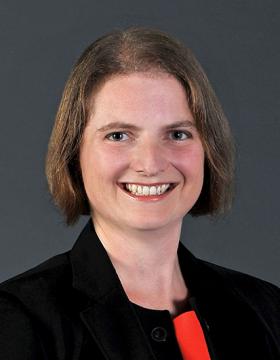With the allied health workforce set to grow in numbers in support of Singapore’s ageing population, healthcare will move health beyond hospitals and into the community as part of the Ministry of Health’s “3 Beyonds” strategy. Are our therapists getting the support they need? Assistant Professor Karina Dancza sets out to understand what would attract and retain allied health professionals to work in community organisations.

(Photo: Shutterstock)
Singapore’s ageing population is paired with looming concerns for healthcare. A major implication of this scenario will be having sufficient allied health professionals enabled to work within the community.
With tertiary education institutions like SIT training future allied health professionals, workforce numbers are looking optimistic.
But what will be the next step when workforce numbers can match therapy needs?
Uncovering What Will Support Future Graduates
“We want to know how to attract and retain our allied health personnel in the community care settings,” Assistant Professor Karina Dancza from SIT’s Health and Social Sciences (HSS) cluster said. “Established hospitals for acute care are very well regarded and often perceived as the pinnacle of where you want to be. With this common mindset, the community services need to highlight all they can offer.”

Asst Prof Dancza (left) and her research team, comprising Yik Ming Choi, former HSS associate faculty and physiotherapist, Li Wen Yap, occupational therapist from AWWA (Asian Women’s Welfare Association), and HSS students, took on the task of finding the elements to direct allied health workforce recruitment and training for the future. Her paper, ‘An Appreciative Inquiry Approach to Understanding What Attracts and Retains Early-Career Therapists to Work in Community Organizations’, was recently published in The Internet Journal of Allied Health Sciences and Practice.
The strengths-based participatory qualitative methodology allowed the research team to move away from a problem-based perspective: Asst Prof Dancza and her team had instead asked community organisations’ therapists “what factors retained them in their roles”.
Taking on an explicitly positive method created opportunities to uncover elements making the biggest difference in personnel retention within the community allied health workforce. It eventually became clear that support made a key difference.

(Photo: Shutterstock)
Building Blocks: Tangible Value from Intangible Connections
Asst Prof Dancza highlighted that mentorship and peer relationships were important factors that helped therapists in their day-to-day work, particularly with COVID-19 and mental health concerns such as burnout.
“It is important to support the people who support others; allied health professionals require time and space to think, peers to decompress with, and supervisors with whom to constructively discuss some of their concerns,” she said.
Having these pillars of support created a difference during tough moments at work to make or break the practitioner’s experience.
“These will assist graduates in building resilience along with the good intentions they started with for their chosen careers.”
“We are looking for a path forward to maintain and expand our community health workforce,” Asst Prof Dancza explained. “In this research, we worked together with therapists on the ground as they have the skills and expertise to co-create solutions to attracting and keeping therapists in their jobs.”
A Systematic, Supportive Environment
Allied health staff retention pointed in the direction of creating an environment of valued connections, via structured mentorship pathways and systematic opportunities for professional development.
“Opportunities to develop meaningful relationships with colleagues and clients” were also core to a valued work environment.
“Having enough time with supervised guidance was a big deal. There may be a mandated period of supervision in Singapore for the allied health workforce. However, there could be a more intentional focus on training and ongoing support for supervisors in their supervisory and mentoring roles,” Asst Prof Dancza stated.
“We may have the number of graduates in future to fulfil the roles that community healthcare requires, but we do need to make sure that we elevate them into their roles and can support them in their jobs.”
Rethinking Community Care
It was also evident from the research that a mindset shift was required, for community allied health professionals to thrive.
Asst Prof Dancza proposed that allied healthcare professionals have a significant role to play, not only in managing existing health conditions, but also in services that keep people healthy and prevent illness.
Allied health professionals have an important role as part of a bigger social picture. They could expand on opportunities to bridge the gap between health and healthcare, addressing ways for people to remain active and engaged in the community so they stay well and require less from the healthcare systems.
“As we worked with allied healthcare personnel, we realised the importance of empowering them as part of a bigger mindset shift for the population,” Asst Prof Dancza said. “Through working together, we not only help patients with health conditions, but also healthy people to maintain their own health and well-being.”
![[FA] SIT One SITizen Alumni Initiative_Web banner_1244px x 688px.jpg](/sites/default/files/2024-12/%5BFA%5D%20%20SIT%20One%20SITizen%20Alumni%20Initiative_Web%20banner_1244px%20x%20688px.jpg)


